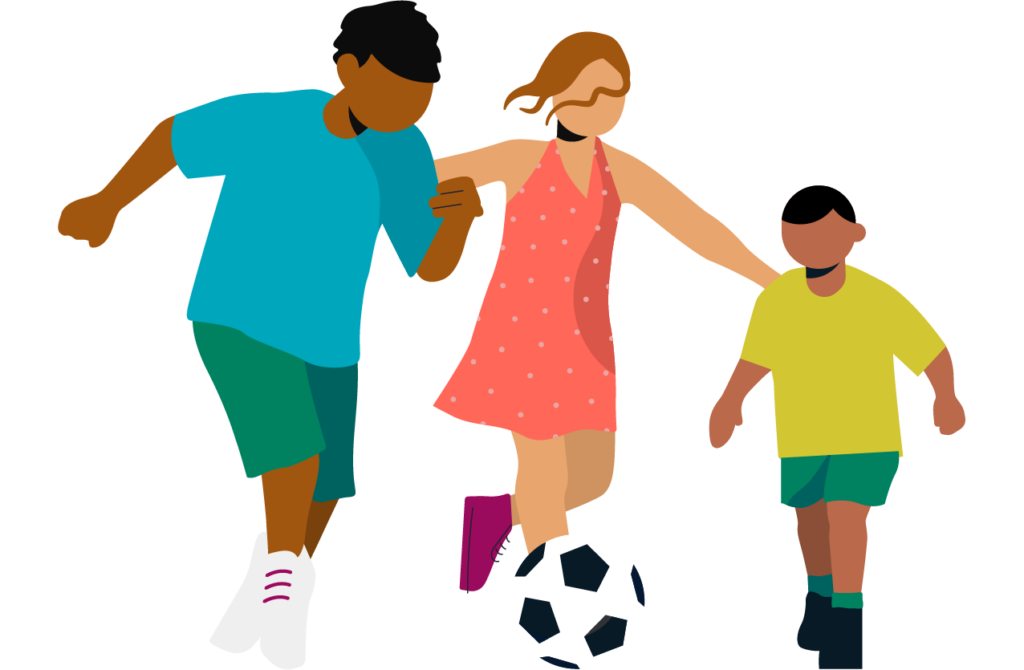Balance in PE - tips and advice
Balance is the ability to stay upright, steady and in control of your posture while undertaking a movement activity. Your child needs to have developed good back and tummy muscle strength in order to balance successfully.
Balance is an important skill as it helps a child gain confidence and skills with physical movement and
coordination. Infants use balance to learn how to crawl, toddlers use it to learn to jump with two feet and kick a ball, pre-schoolers use it to learn how to skip and dress themselves, and older children gain skills in sports and games.
Your child should be encouraged to participate in a wide variety of activities to help promote balance and movement skills. Select activities that motivate your child, as this will encourage success.
Activities and strategies
The following activities have been put together to enable practice and improve balance skills. They
can be carried out in any order and should ideally be practised about three times a week for 15
minutes and could be incorporated into PE lessons.
- Encouraging opportunities for your child to experience a wide variety of movement-based
activities will help to improve their balance and build up confidence e.g. walking, running,
climbing, swimming. - Take your child to a local playground regularly and encourage them to use as all the outdoor
play equipment e.g. swings, slides, balance beams, climbing frames and ladders. - Walking games – create different styles of walking e.g. fairy steps, giant steps, rabbit jumps,
crab walks, slow moon walks. - Tug of war – try these in sitting, high kneeling position, as well as standing.
- Balance in crawl position – let your child practise keeping their balance by lifting up one leg
or one arm when in a crawling position. Make it more difficult by getting them to lift up a leg
and arm at the same time. - Resistance Statues –
- A. Four Point Kneeling – Ask your child to position themselves on all fours ensuring arms,
hips and knees are angled at 90°. Once in position, encourage your child to resist your
touch when you attempt to gently push them over by advising them to tense their
muscles. - B. High Kneeling – Ask your child to adopt a high kneeling position with knees bent and
shins against the floor and upper body in an upright position. Once in position,
encourage your child to resist your touch when your attempt to gently push them over
by advising them to tense their muscles. - C. Half High Kneeling – Ask you child to adopt kneeling position with one knee bent and
shin against the floor and opposing knee bent and held in front of the body with foot
touching the floor. Once in position, encourage your child to resist your touch when you
attempt to gently push them over by advising them to tense their muscles. Repeat by
changing the leg positioned in front of the body. - D. Step up – Using a step, ask your child to place one foot onto the step with their other
foot positioned on the ground. Once in position, encourage your child to resist your
touch when you attempt to gently push them over by advising them to tense their
muscles.
- Aeroplanes – Have your child lie on the floor on their tummy. They then need to lift their
head, shoulders, arms and legs off the floor, trying to hold this position for 10 seconds. - Walking along a line – child to walk along different lines e.g. straight, zig zag, circle, etc.
Encourage your child to walk forwards and backwards, heel/toe, pretending to be a
tightrope walker. Take turns with your child and keep a score on how many times they
stepped off of the line. - Stepping stones – place cardboard cut-outs of circles, squares or triangles on the floor. See if
your child can follow the course by placing one foot on each “stone”. Vary the distance
between them. - ’Grandmothers footsteps’ – Players start on the starting line with one person as ‘it’. Players
creep up behind ‘it’ but must be still when ‘it’ turns round. Anyone moving goes back to the
start. First person to win becomes ‘it’. - Standing on one leg – when standing on one leg, initially hold their hands, then encourage
letting go of your hand support. Get your child to try to maintain balance on one leg with
hands on hips. When learning to stand on one leg, get your child to look straight ahead and
focus on an object, then slowly lift their leg and hold it raised for as long as possible. - Feet pick up – Child picks up marbles or objects with feet and places them in a container.
- Hopping and skipping games – Child to learn to play hop scotch, skipping with a rope/ hoop
or on the spot. - Twister.
- Obstacle courses – make it harder by asking them to balance a bean bag on their head.
